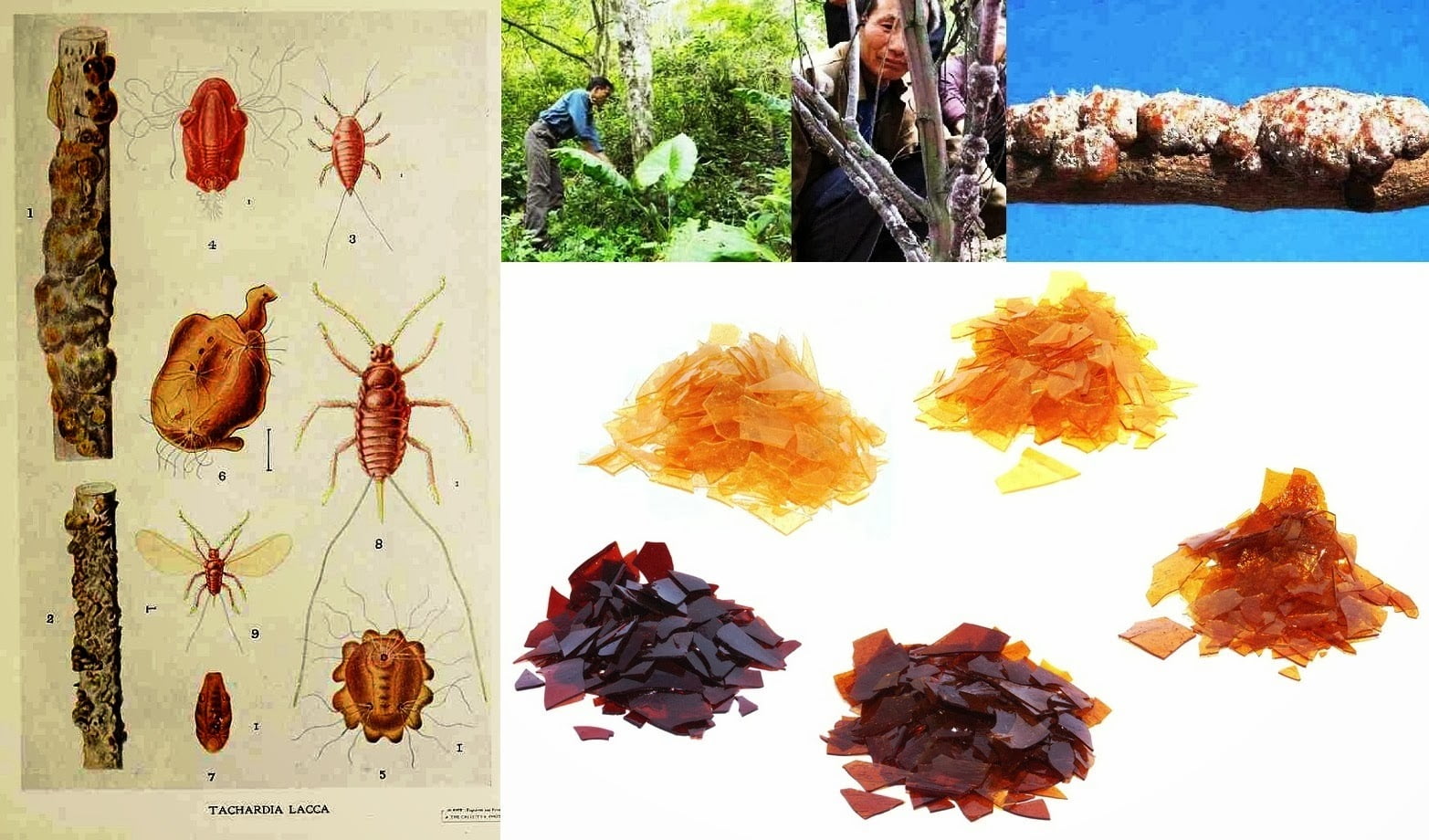Lac culture
Author: Saad Ramzan, Kanwal Hanif, Muhammad Ahsin Ayub and Naeem Arshad Maan
Ayub Agriculture Research Institute (AARI), Faisalabad.
- Introduction:
The art of rearing lac insects on scientific lines for lac production is called lac culture.
Lac is a product of lac insect which is only produce in Indo-Pakistan. Previously lac was valued for its dye but after discovery of synthetic dyes, there is no or less demand for lac-dye and now it is valued for rosin. Resin is used for manufacturing of paints, varnishes, gramophone records, bangles and ear-rings etc. Lac is also use to paint the planes and ships to protect them from water and climate effects. It is also use in coloring of wooden articles
- Lac insects species
- Kerria lacca (the true lac scale)
- Paratachardina decorella (the rosette lac scale)
- Paratachardina pseudolobata (the lobate lac scale)
- Harvesting period:
- Kharif
- Rabi
- How to start lac cultivation:
Locality:
Temperature required for cultivation is 40-1100F and humidity 40-70%. Rainfall must be 30 inches and well distributed. Sub-mountain areas of Punjab are best locality. Salt range, river belts and thick forests are also good.
Lac host:
77 plants were tried to rear lac culture but only 5 were proved suitable and successful. These plants are described below.
- Zizyphus jujube (Ber)
This plant produce lac of superior quality. Respond to pruning. Ber brood lac can be tried on all other hosts.
- Ficus (Fig)
Best specie is Ficus carica. Lc produce is light weight and superior quality. It affords protection to brood in summer.
- Butia monosperma (Dhak)
This host cannot be use is new areas but it is granted as best host.
- Acacia Arabica (Kiker)
Inferior quality lac is produce. In Hyderabad it is the most significant host.
- Albizzia labbek (Siris)
Inferior quality lac and brood become specific.
- Method of propagation:
- Natural
Swarming on mother plant and larvae settle on the growth of infested branches, Infection is not uniform. This method is not to be practiced.
- Artificial
This method is use under control conditions. After pruning, 2-3kg of brood is inoculated on each tree.
Stick method of inoculation is the quickest and the most efficacious and economical. Healthy branches of infested tress i.e., brood stick 9-12 inches long or out and tied below the fresh branches to be inoculated. If the branches are parallel, the brood sticks are tied across these branches. On swarming, larvae travel under side of branches.
- Lac products and their uses
- Lac dye:
Lac dye is a mixture of anthroquinoid derivatives. In recent past, lac dye has been replaced bysynthetic dye. But now a day with increasing stresss and awareness on use of ecofriendly and safe material particularly associated with human contact and consumption has made revival of great demand of lac as a coloring material. Following are some uses of lac dye.
- It is traditionally use to color wax and silk.
- Its color varies between purple red, brown and orange. It is use in coloring of beverages.
- Lac wax:
Lac wax is a mixture of higher alcohols, acids and their esters. It is used in
- Polishes applied on shoes, floor, automobiles etc.
- Lipsticks
- Crayons
- Food and confectionary and drug tables finishing
- Shellac:
Shellac is a natural gum resin and it is used in 100 different industries. It is natural, non-toxic, physiologically harmless and edible resin. Shellac is hard, tough, amorphous and brittle resin containing small amount of wax and a substance which give pleasant odor to it. Following are some uses of shellac
- It is use in coating fruits, e.g. for citrus fruits, apple etc.
- It is as binder for food stuff stamp inks, e.g. for cheese and eggs.
- It is use as binder for mascara, nail varnish, conditioning shampoo.
- It is use in preparation of toys, buttons, pottery and artificial leather.
- It is use commonly as sealing wax.
- It is use in preparation of gramophone records.
- Jewelers and goldsmiths use lac as a filling material in the hollows in ornaments.
- Use in manufacturing of photographic material.
- Bleached shellac
Bleached shellac is non-toxic, physiologically harmless, and is widely used in the food industries, food packaging etc. following are the uses
- Paints
- Use in aluminum industry
- Flexographic printing inks.
- In pharmaceuticals for coating of tablets, pills and gel caps
- Wood finishing.
- Fire work.
- Dewaxed bleached shellac
It is use in
- Coating of fruits and vegetables
- Coating in tablets and capsules
- Coating in confectionary
- Coating in aluminum foil, paper
- Coating in cosmetic industry
- Lac insect pest
The insects are serious and damaging pests to the lac crop also, like other agriculture crops. These pest destroy 30-40% of lac.
- Parasites:
Lac insects are parasitized by small eight species of insect belonging to family chalcidae order hymenoptera. These insect pest lay eggs in lac cells. On hatching they feed on lac insects within the cells. Loss due to these parasites are is 5-10%.
- Predators:
Predators damage up to 35% of lac crop. There are three main insect predator on lac
- Eublemma amabilis Moori commonly known as white lac moth.
- Holocera pulverea Meyr commonly known as black lac moth.
- Chrysopa spp commonly known as lac wing.








